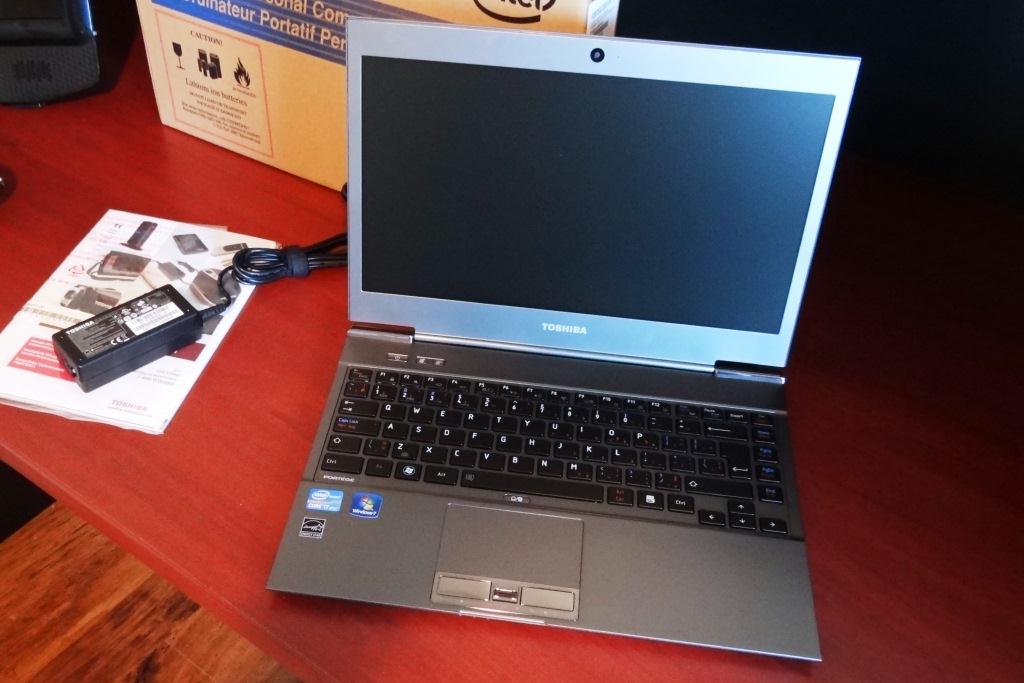FINAL THOUGHTS AND CONCLUSIONS
Once again, we have covered a great deal more than I initially expected and I hope it has been at a level that most can understand as well as being interesting. The consumer is no longer limited to just accepting pre-configured systems and, even when purchasing a system, should have an avenue to understand what purpose the storage device within serves as well as how it does what it does.
This is the Toshiba Z830 Ultrabook which is one of the top selling notebooks on the market since its release and the amazing thing is that most buyers might read that there is an SSD inside but will have no clue as to what a solid state drive is.
Understanding the different types of SSDs can, not only help you out in your understanding of such, but also, can better equip and help save a great deal of money in your final purchase decision.
In case this article has reached you through one of the many search engines, we should mention that this is the third in our series of SSD Primer articles meant to help us all along in our understand of solid state drives.
- BENEFITS OF A SOLID STATE DRIVE – AN SSD PRIMER
- SSD COMPONENTS AND MAKE UP – AN SSD PRIMER
- SSD TYPES AND FORM FACTORS – AN SSD PRIMER
- SSD ADVERTISED PERFORMANCE – AN SSD PRIMER
- SSD MIGRATION OR FRESH INSTALL – AN SSD PRIMER
- GC AND TRIM IN SSDS EXPLAINED – AN SSD PRIMER
 The SSD Review The Worlds Dedicated SSD Education and Review Resource |
The SSD Review The Worlds Dedicated SSD Education and Review Resource | 

We L-U-V all the fine photos, Les.
KEEP UP THE GOOD WORK!
/s/ MRFS
The writing here is terrible. You should hire an editor.
Just how massive is your Mastiff.
An effective warning about your security system to potential evil-doers.
Great picture… I did a double-take.
He is 220 lbs of security! Tx for the comment!
Great article! very benficial, helped me understand the SSD arena and how to make an informed decision at purchase time. keep up the good work.
Thank you Mark!
You mention on page 3 “The mSATA SSD measures about 50mm long x 49mm wide x 4.85mm thick, or 1/3 the size of a business card”. Measurements are 50.8mm x 29.85mm x 4.85mm. Not 49mm.
Doooh Tx! Fixed.
Articles like these are one of the reasons I hold your site in such high regard. You do not cater only to the high-level enthusiast crowd, but instead work hard to ensure that you maintain as technologically-diverse an audience as possible. While many have tried to do this before, it has almost always inevitably resulted in failure, likely as a result of many websites “talking to” their more mainstream consumers as if they are stupid. You guys have managed to avoid this, and as such, I recommend this site to everyone who is considering purchasing a new storage solution, from friends who can barely manage to work an iPhone to others who share the same level of enthusiasm as myself when it comes to building their own PC.
You guys rock!
Thank you Nick. Receiving feedback as such is more valuable than you can imagine and kinda puts a bit of adrenaline into our work ethic!
GC AND TRIM IN SSDS EXPLAINED link does not work
Fixed and thank you very much! Sometimes things like this slip through as we update!
A few words to tell you how much I have enjoyed reading your articles. I am preparing for my leap to an SSD. My lack of knowledge has prevented me until now. You have a skill of explaining things that has helped me greatly. Thanks.
Thanks Chuck and good luck. Don’t be afraid to jump into our Forums if you have any need for immediate assistance whatsoever…
Thanks for your article. I’m about to purchase the Sonnett Tempo Pro Plus.
https://www.youtube.com/watch?v=KMQaDRcr4AU
Do you have an opinion on this one. I like the idea of utilizing my current 250gb Samsung SSD which has been plodding along in the bay drive. I have a Mac Pro, Early 2008 which has the second PCI slot only being used by a 3.0 USB that I put in last year. I need processing power for Final Cut multi-cam editing. I can get by with this cheaper than the OWC 480gb version. Of course no 3 year warranty. The Sonnett looks cool, but no reviews on B&H. What would you do?
This one badly needs an update Les 🙂
Yes I know where you are coming from… Thanks ahead.
Great job!